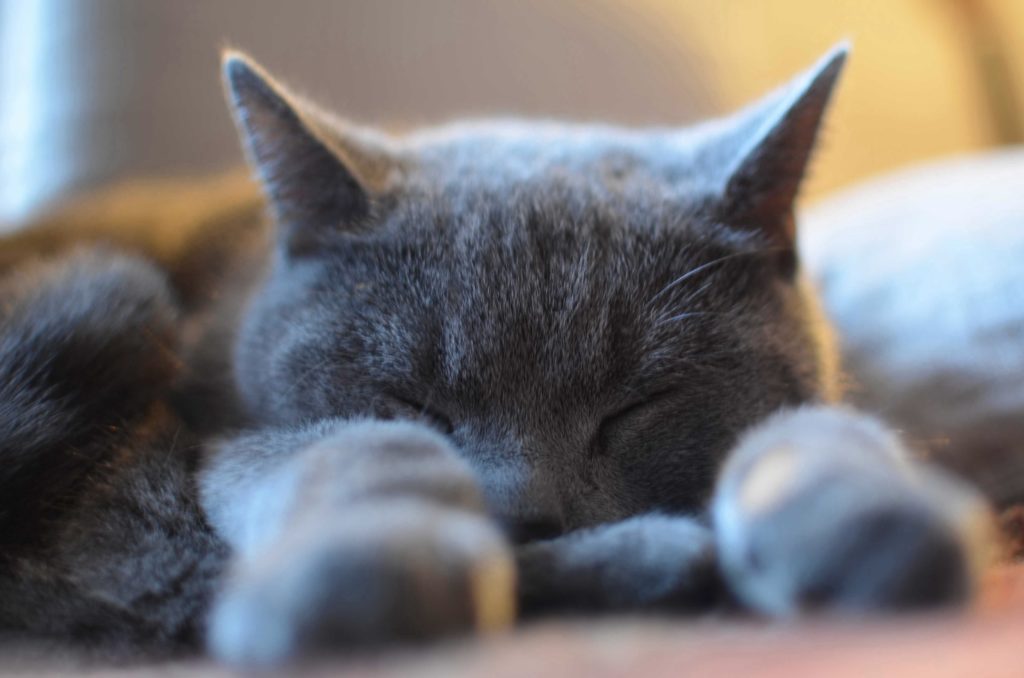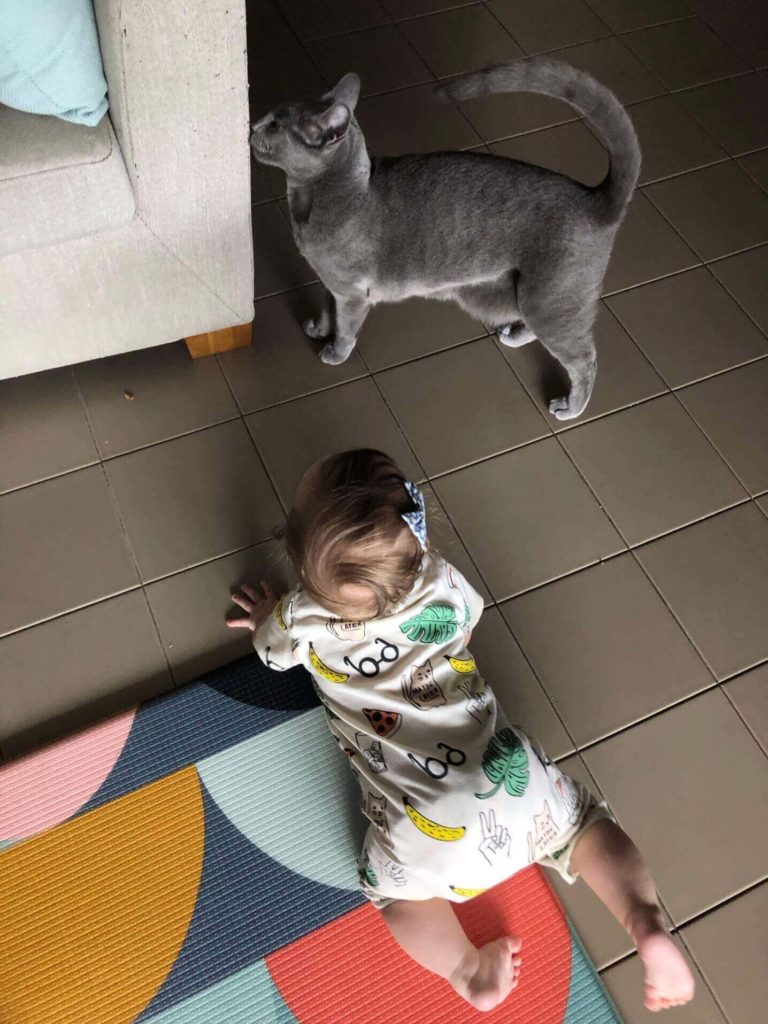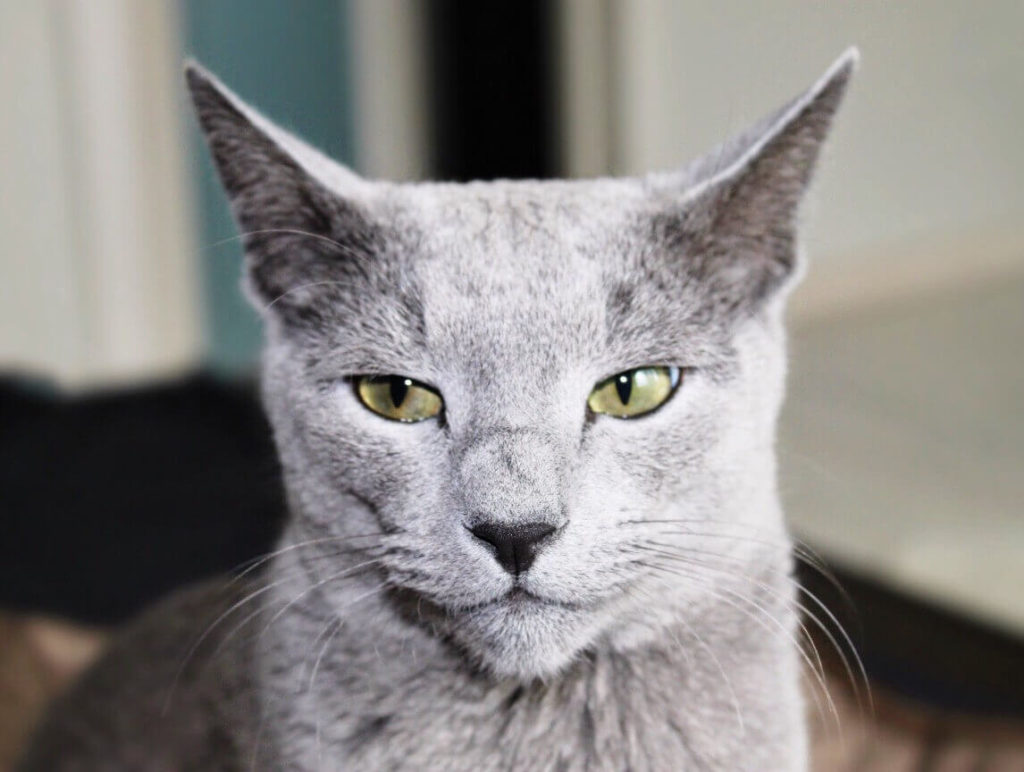As a cat owner, it is your responsibility to make sure that any unusual behavior in your Russian Blue is not a sign of something more serious. Hypoglycemia is one such issue that needs a quick and timely response from you.
Hypoglycemia in Russian Blues means that their blood glucose (sugar) levels are too low or below 60mg/dL. Since sugar is the main source of energy for your Russian Blue, Hypoglycemia will cause your cat to lose the ability to function normally. However, in severe cases, Hypoglycemia can even prove to be fatal for your Russian Blue.
Hence, it is important for you to act in a timely fashion if you see any symptoms of Hypoglycemia. Nonetheless, let us first look at what causes Hypoglycemia in Russian Blue cats.
What Causes Hypoglycemia in Russian Blue Cats?
First, it is important to understand that Hypoglycemia is not a disease, but is a symptom of another underlying disease.
In Russian Blues, as in humans, the most common cause of Hypoglycemia is diabetes. This happens when you inject your Blue with a higher amount of insulin than necessary to regulate their blood sugar. With this high level of insulin in your Russian Blue’s body, the blood sugar level goes below the normal level and hence causes Hypoglycemia.
Nevertheless, I have also listed other causes of Hypoglycemia in cats that do not have diabetes.
- If your Russian Blue misses meals or is fed later than usual for a prolonged period.
- If there is a change in your Russian Blue’s diet or the amount that s/he is fed.
- If your Russian Blue has Adrenal, Pituitary, Liver, Kidney, or Thyroid gland diseases.
- Hypoglycemia could be a side effect of a medication that your Russian Blue is being given for a different reason.
- If your Russian Blue is getting an excessive amount of exercise, which essentially uses up all the sugar that gives the energy for any type of exercise.
Additionally, although confirming whether your Russian Blue has Hypoglycemia may be easy – you only need to take your cat to the veterinarian to do this – it is figuring out what caused your Russian Blue to acquire Hypoglycemia in the first place which is difficult. Hence, do not get frustrated. Your cat needs you the most at this time.
What are the Symptoms of Hypoglycemia in Russian Blue Cats?
The symptoms of Hypoglycemia in your Russian Blue are listed below.
However, it is important to note that your diabetic Russian Blue, despite having Hypoglycemia, may not show any obvious signs. Hence, you will have to remain vigilant throughout your Blue’s life to ensure that your cat’s health is perfectly fine.
The symptoms are as follows:
- Restlessness
- Shivering
- Coma
- Convulsions or seizures
- Incoordination
- Disorientation
- Hunger
Hence, if you notice any of the above symptoms in your Russian Blue, then the best course of action to take here is to reach out to your veterinarian. Your veterinarian will be able to perform a physical examination, look at your Russian Blue’s complete health history, and perform diagnostic tests to confirm that your Russian Blue is experiencing Hypoglycemia if that is the case.
Is There a Cure for Hypoglycemia?
The good news is that there is a cure for Hypoglycemia in your Russian Blue! However, it is of utmost importance to take these measures once you are sure of your Russian Blue experiencing Hypoglycemia.
How to Treat Hypoglycemia in Russian Blue Cats
After having a better understanding of the cause and symptoms of Hypoglycemia, it may now be obvious that treating it consists of raising your Russian Blue’s blood sugar level. Hence, the following are the two ways of dealing with Hypoglycemia once you have confirmed its presence in your cat.
- Your Russian Blue’s blood sugar levels must be raised immediately.
- The underlying reason, which caused Hypoglycemia, should be treated to prevent it from happening repeatedly.
Below, I have discussed the steps that you can take to employ the first approach. However, the second approach can and should be dealt with only after consulting with your veterinarian and educating yourself on what disease your Russian Blue is currently suffering from.
If your Russian Blue is displaying mild symptoms of Hypoglycemia, like lethargy, then you should first try to feed them. However, if your Russian Blue is showing extreme signs of Hypoglycemia then the steps mentioned below are the way to go.
Emergency Treatment of Hypoglycemia
If your Russian Blue is exhibiting clear and extreme signs of Hypoglycemia, such as convulsions or seizures, then it is best to have your cat eat sugar. This can be in the form of granulated sugar, honey, corn syrup, or even fruit juice.
Be sure to give 1g of sugar per 1 kg of body weight of your Russian Blue, in this case.
However, if your Russian Blue has collapsed, then make sure not to force-feed your cat fluid. This could be a cause for further damage, such as causing aspiration pneumonia. In this state, it is best to rub a small amount of glucose solution or corn syrup into your Blue’s gums or under its tongue.
Once you have taken these emergency measures, you can proceed to take your Russian Blue to the veterinarian’s clinic.
How Long Does it Take Your Russian Blue Cat to Recover from Hypoglycemia?
Once you have taken these emergency treatment measures, your Russian Blue will take anywhere from 40-90 minutes to fully recover after the blood sugar level has reached the normal level. This is mostly because sugar takes time to bring about the necessary positive changes in your cat’s body.
Additionally, it is very effective to inject doses of Pyruvate into your Russian Blue after an incident with Hypoglycemia. Pyruvate is an important chemical compound, which could reduce brain damage in your cat. However, make sure to consult with your veterinarian about how much and when you can inject Pyruvate into your Russian Blue without causing it any harm.
What Happens If You Give your Russian Blue Insulin Without Feeding Them First?
An important message I can give you here is, INSULIN SHOULD ONLY BE GIVEN TO YOUR CAT AFTER FEEDING THEM.
If you do not feed your Russian Blue before injecting insulin into their body, then this is a sure-fire way of causing Hypoglycemia or other serious problems in your cat.
Hence, it is best to try feeding your Russian Blue first. However, if this does not work, then you can try feeding it food that you know they like. I recommend canned food, broth, or even treats that are low in carbohydrates such as meat or cottage cheese.
Once your Russian Blue eats, you can then go ahead and inject the insulin.
However, remember that there might be a more serious issue at hand if your Blue does not eat right away. In this case, it will be best to consult with your veterinarian.
Also Read: How to Properly Feed Your Russian Blue Cat
How Long Do You Have to Wait After You Have Fed Your Russian Blue?
As for waiting to inject the insulin after you have fed your Russian Blue, you can go right ahead. There is no hard and fast rule for you to wait a certain amount of time.
How to Determine your Russian Blue’s Blood Sugar Level At Home
Now, let us move on to the last part of this procedure.
To ensure that your Russian Blue is not at risk of suffering from Hypoglycemia, you can simply observe your cat. However, you can also opt to determine your cat’s blood sugar level at home.
This can be done most easily by purchasing glucose test strips from a drug store. Yes, these can be the same glucose urine test strips that humans use. All you have to do is to dip these test strips into your Russian Blue’s urine. Then the strips will determine how much glucose is present in your cat’s body!
Something noteworthy here is that although this test will help you determine whether giving your Blue the normal amount of insulin is okay, it will not help you determine exactly how much insulin you can inject your cat with.
Final Words
The above information about Hypoglycemia may not have relieved your worries about your cat suffering from this condition. However, if you are here it probably means that the condition has not become too extreme. Hence, at this stage, it will be best for you to observe your cat for the aforementioned symptoms.
Once you have confirmed whether your Russian Blue actually has this condition or not, you can take the necessary measures. No matter what, remember to remain calm for your precious Russian Blue!





